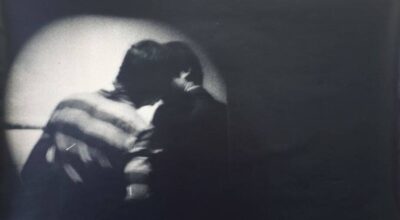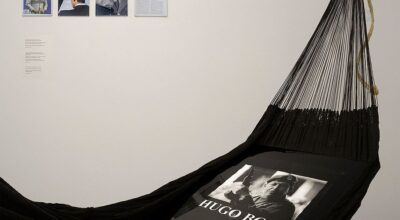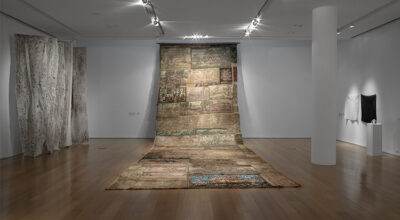English
JORGE TACLA: STAGINGS/ESCENARIOS
Prior to this body of work, Tacla largely excluded the human figure from his paintings, letting buildings and rubble suggest a human presence or intervention. His practice shifted after personally processing images of political rallies in the U.S., Chile, Lebanon and Hong Kong, China, in 2019-20. «October 25, 2019, #4 (2022)» is emblematic of this new mode, depicting some of the estimated 1.2 million protesters that gathered across Chile’s capital, Santiago.
MIGUEL ÁNGEL ROJAS: YO, USTED Y EL CLAN
«Yo, usted y el Clan» at Casas Riegner, Bogotá, surveys the career of famed Colombian artist Miguel Angel Rojas. A leading figure in the history of conceptual art and a chameleon of medium and form, Rojas has recently been the subject of another retrospective. Only last year, his expansive show at the Museo de Arte Moderno Bogotá (MAMBO) Regreso a la Maloca (2021) placed a particular emphasis on the exploitation and conflict in the Amazonas region in southern Colombia. At Casas Riegner, the emphasis is a bit broader and retrospective in tone.
CLAUDIA MARTÍNEZ GARAY: GHOST KINGDOM
Claudia Martínez Garay’s striking installation practice, brilliant use of color, and varied configurations of scale and material reminds us of the importance of collective mythologies in reclaiming symbols of the past through alternative methods of storytelling practiced throughout South American communities to challenge hegemonic colonial narratives and propose alternative futures.
EROS RISING: VISIONS OF THE EROTIC IN LATIN AMERICAN ART
Curated by Mariano López Seoane and Bernardo Mosqueira, Eros Rising: Visions Of The Erotic In Latin American Art features works by Artur Barrio, Oscar Bony, Carmelo Carrá, Feliciano Centurión, David Lamelas, Carlos Motta, Wynnie Mynerva, La Chola Poblete, Tadáskía, and Castiel Vitorino Brasileiro, ten artists whose practices challenge conventional modes of imagining the erotic experience.
MONEY HAS NO SMELL
«Money Has No Smell» brings together recent works by Ignacio Gatica, Mariana Parisca, and GabriellaTorres-Ferrer that trace flows of currency to and from the artists’ places of origin -Chile, Venezuela, and Puerto Rico, respectively-, in the process addressing the complexity of globalized and interdependent financial systems.
ALESSANDRO BALTEO-YAZBECK: SALTO ATRÁS
«Salto atrás» could then be understood as a museographic device designed by Balteo-Yazbeck to trace a narrative arc that is structured from his early questioning of the past glories of local abstract art and is directed towards the construction of a set of cultural artifacts that are manifested as documents of the painful political and economic crisis of today’s Venezuela.
AÓ: TEXTILE EPISODES IN THE VISUAL ARTS IN PARAGUAY
The exhibition presents installation and sculpture that Colombino designates as textile operations of art, which she significantly distinguishes from textile art. While the latter speaks to types of embroidery and sewing, such as ñandutí, aó po’í, poyví, and yú, prevalent in Guaraní communities, the former references practices that incorporate these textile arts within a Western conception of art making.
ECOLOGIES OF CARE
«Ecologies of Care» showcases a series of new works created during Ani Liu’s postpartum period, in contemplation of the labor of mothering. Reflecting the material culture of infant and childcare, the works shown are created with breast milk, formula, diapers, breast pumps, toys, tracking apps, and screen time.










